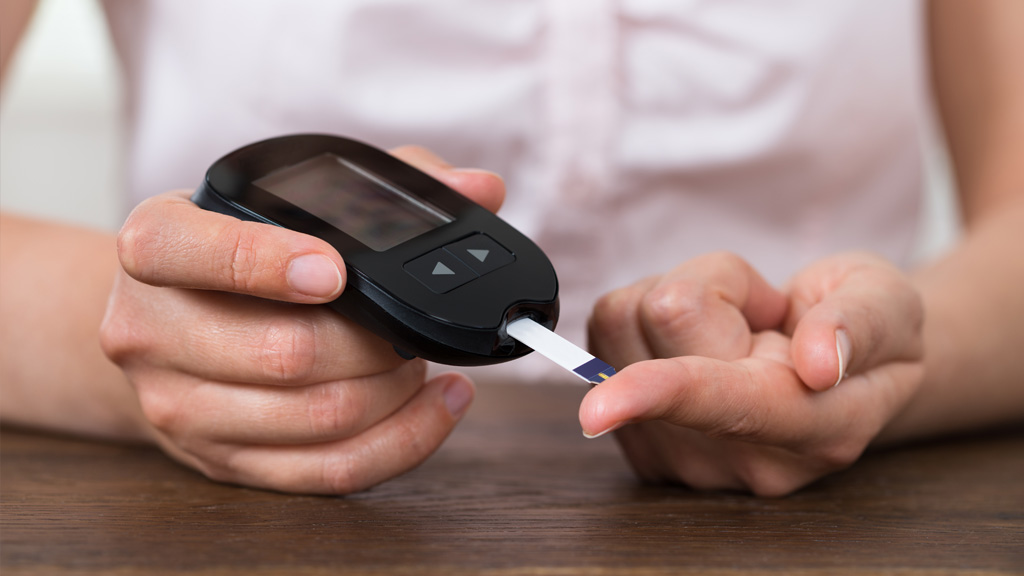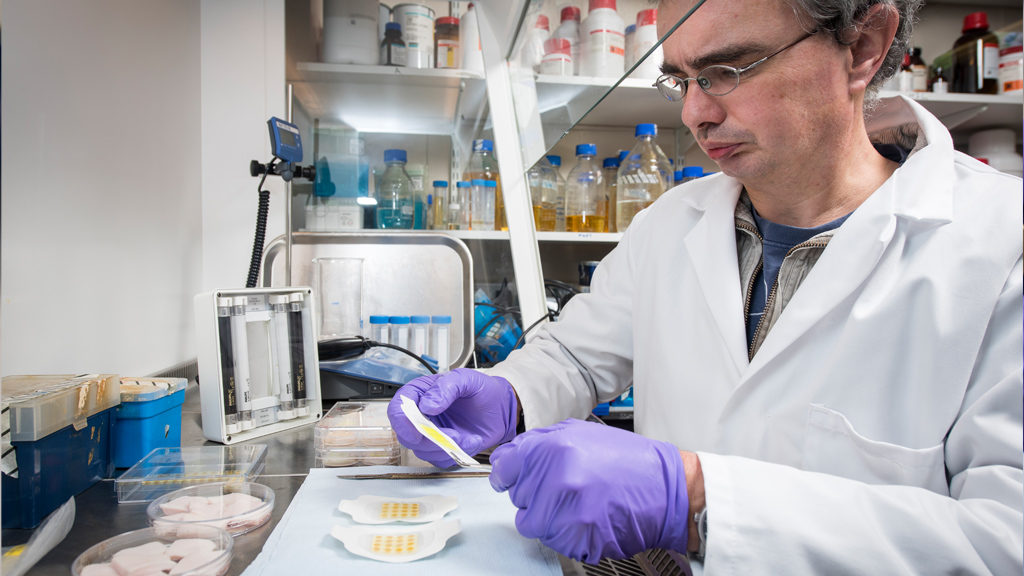‘I didn’t predict how ground-breaking this research would be at in the beginning,’ says Head of our Department of Chemistry Professor Chris Frost. ‘There were just four of us working on it at Bath: me, Toby Jenkins, Laurie Peter and Stephen Flower.'
From little acorns…
‘It started with a request from a company that was then called Molecular Sensing. They were involved in developing technology for DNA testing and it was their research director, John Clarkson, who got the ball rolling. As a former Reader in Biology and Biochemistry at Bath, he had the idea of trying to use electrochemistry for detection in this context and, as a consequence, became the founding Chief Executive of Atlas Genetics.
‘This process integrates a chemical reagent with electronics. It was a different approach to using and detecting DNA sequences, and was interesting. We wondered if we could potentially apply these probes for use in disease diagnosis; for example, detecting the presence of specific bacterial DNA.’
In about 2002, John approached Professor Laurie Peter – who was Head of the Department of Chemistry at the time – to see if anyone at Bath could design and make suitable electrochemical tags to attach to the DNA. ‘This idea was to use changes in the signal on binding complementary DNA,’ says Chris, ‘and since I was an organic chemist interested in modifying proteins and DNA, Laurie introduced me.’
Blue sky research
At that stage, the team didn’t have a particular commercial idea in mind; they just wanted to do some blue sky research. DNA comes in complementary pairs that hybridise, and the initial concept was that they’d see a change in the electrochemical signal of the probe strand, with the attached label.
‘We spent about six months designing the first batch and optimistically attached the labels to a long strand of DNA. Sadly, we didn’t see anything – there was no signal. It didn’t really work, and of course we were disappointed. So we thought about it some more and had another idea, and I’m not certain whose it was! It came because we know that certain enzymes are able to digest – or chop up – specifically double-stranded DNA, when it hybridises.’
This inspired the team to use one of these enzymes in conjunction with the labelled probe, to initiate the digestive process and then the release of a smaller fragment, containing an electronic label that could later be detected. This time early results looked promising, but there was a sensitivity problem. Since it was rather difficult to see a clear signal on some positive samples, they had to go back to the lab to design a label containing more electronic reporters. The experiment was successful, as it turned out that two electronic tags were enough.
Chris explains: ‘It was a generic test and we were absolutely thrilled to find that it worked. In principle it could detect any specific DNA sequence, and we could see the potential applications in disease diagnosis. Then, from a business point of view, we wondered who would be likely to pay for this sort of product. We started thinking about rapid tests for bacterial diseases from meningitis to sexually transmitted diseases to veterinary sciences, for instance as a remedy for Strangles, a respiratory infection that affects racehorses.’
Going public
Once the test was proven and the team was convinced that there would be commercial demand, a company was spun out on the basis of this initial work: Atlas Genetics was formed, with laboratories in Trowbridge, where they still operate. However, the company now has headquarters in the US, because the sheer size of the country makes that the primary market.
‘I was one of the academic founders of Atlas, but when it spun out of Bath it was funded by an external individual investor and a University seed corn fund. Now, the company’s raised over £60 million from a strong network of private venture funds.’
The new test for Chlamydia will be the first to be commercialised; it’s currently going through the final stages of testing to gain FDA approval before it can be launched. The main advantage is that it’s a rapid, point-of-care solution.
Once tested, using a simple swab, patients will wait for just 30 minutes for their result and, where the result is positive, will receive a prescription and appropriate drugs immediately. This means they can start treatment straight away, precluding the need to pack and send off a sample, and a wait of two weeks or so for results to be returned to their GP from the lab. Another key differentiator – of healthcare and social significance – is that patients are less likely to unwittingly pass on their infection to other partners while awaiting results. Hence, this work will also contribute to preventing the transfer of diseases.
A viable impact
‘I’m still working with Atlas Genetics,’ says Chris. ‘At the moment we’re trying to develop a suite of labels that will allow us to test patients for multiple infections from a single sample, whether it’s blood, urine or a swab. As long as we can extract the DNA from it, we can use it.
‘That project has inspired me to work on other sensor projects, and I’m currently working on new platforms. One is for detecting prostate cancer (with Pedro Estrela; another is detecting biomarkers in waste water with Barbara Kasprzyk-Hordern. In all of these, we’re contributing the design of chemical reagents and attaching them to biomolecules that serve as recognition elements for the target of interest. It’s important to note that this is a team effort involving many disciplines, including biology, chemistry, engineering and psychology.
‘In many ways, solving the chemistry problem is the easy bit. The next stage, making it accessible to healthcare professionals, is more of an engineering problem. Our solution has to come out of the laboratory and into a disposable microfluidic chip.'
Atlas is trying to develop one so these tests can be carried out in a routine fashion and perhaps, one day, there will be a solution where people can self-diagnose less serious conditions at home, rather than in a healthcare environment.
‘Fundamental research takes up a lot of my time, so it’s really exciting to be working on a beneficial product that’s so useful in the real world. Nothing I’ve worked in has had a more viable impact than this project. Aside from the clear benefits for patients and healthcare providers – in terms of both time and costs – this work has opened up huge opportunities for reagents to be used in sensors in healthcare.’


